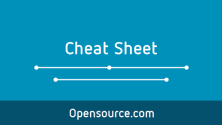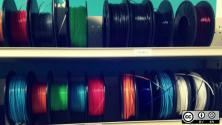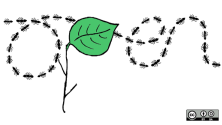This year marks the 15th Blender Conference, held in Amsterdam around the last weekend of October every year. I've attended quite a few of these conferences, and each year feels better than the one before. If you've never attended the Blender Conference, allow me to set things up for you: By open source conference standards, it's a pretty small event. But for events focused on a single open source program, the Blender Conference is pretty impressive. I think attendance this year clocked in right around 300 people, and tickets were sold out more than a month in advance.
There are two venues for speakers presentations: a large theater for big lecture-style talks, and a smaller "salon" for more interactive workshops. And, of course, there's the hallway track where you can catch up with fellow blenderheads from all over the world, see what they're working on, and re-invigorate yourself with copious amounts of coffee or tea. If you weren't able to attend the event in person, that's OK—all of the talks were streamed live and, after a bit of processing, will be freely available for viewing on the Blender Foundation YouTube channel.
A lot of the excitement in this year's conference was around the direction Blender's development is taking. Not only are there plans for big features—such as an improved 3D viewport or a custom-tailored interface for kids and those just starting out in 3D—but the big news is in how that development is actually going to happen. For the next year at least, Blender is going to have 10 additional full-time paid developers. Some of those developers will be paid by the Blender Foundation or Blender Institute, sponsored with contributions from AMD, Aleph Objects, and the Nimble Collective.
More importantly, developers are being hired by production studios that use Blender, such as Tangent Animation and MAD Entertainment. These developers work on Blender for in-house productions, but their changes get submitted as patches for the version of Blender that we all get to use. This is a far more sustainable development model than sponsored grants and has been incredibly successful in other open source communities. It's only now starting to catch on in the realm of open source creative tools.
For me, though, the most exciting presentations at the Blender Conference relate to the things that people are actually doing with Blender, some of it completely unexpected and in fields entirely removed from movies, games, and advertising. Sure, it's fun to watch all of the films for the Suzanne Awards, the Blender Conference's little integrated film festival; however, I'm really inspired by how people have put Blender to work in planetariums, automotive design, protecting athletes, microscopy, and fashion design—and those are just some highlights. In that vein, one of my single-most enjoyable presentations at the Blender Conference is the Open Stage. If you've ever seen a series of lightning talks at other events, you have a bit of an idea of what this is like: a handful of talks, each no longer than five minutes. At the Blender Conference's Open Stage, this goes for at least an hour and a half. You get a continuous onslaught of all kinds of ways people are using Blender. Short films, maker projects, holography, software development, real-time animated doughnuts—they all get covered. I even had a brief little moment to talk about some of the fun things I'm doing in the community:
Future events
I'm not sure what the plan is for future Blender conferences. At this point, I wouldn't be surprised if the event could fill a larger venue with twice the number of attendees.
Part of me worries about that a little. I like that the conference is small and friendly (not casually friendly, but genuinely friendly—this is a conference with way more hugs than handshakes). But I also think that the Blender community might be reaching an inflection point, one of those times in which things get bigger and change irreversibly.
Regardless, the Blender community is special. This is a group of people that came together 15 years ago and purchased Blender's source code with the explicit purpose of releasing it under an open source license. This was crowdfunding well before the likes of Kickstarter and Indiegogo, and one of the first examples of a piece of software being liberated by its community. The community's passion embodied in that act shines through to this day, and it's reflected in full at the Blender Conference.
Even if you have no interest in computer graphics and animation, it's worth attending this event just to get a sense of that passion and energy. See you there next year.







1 Comment